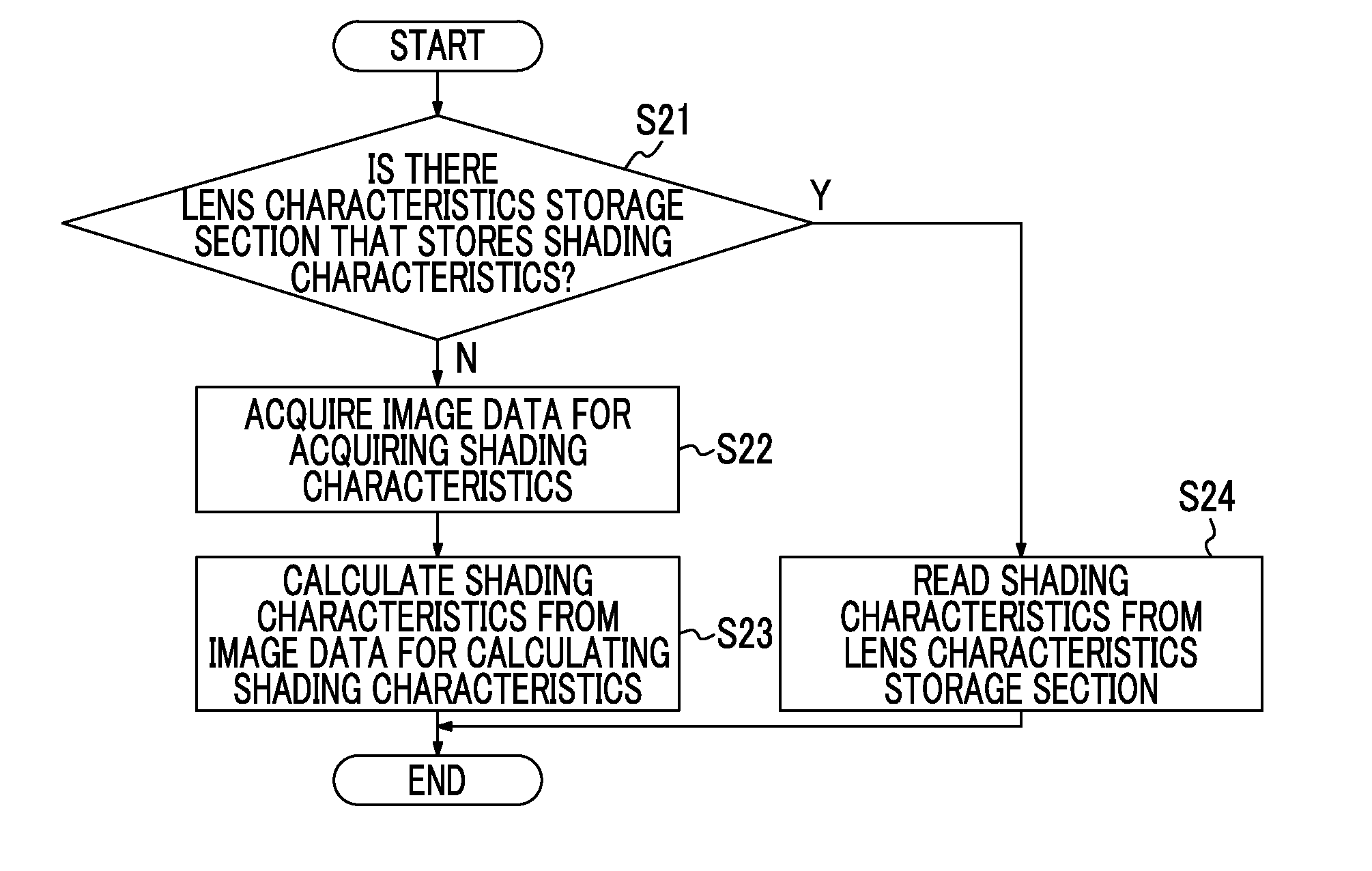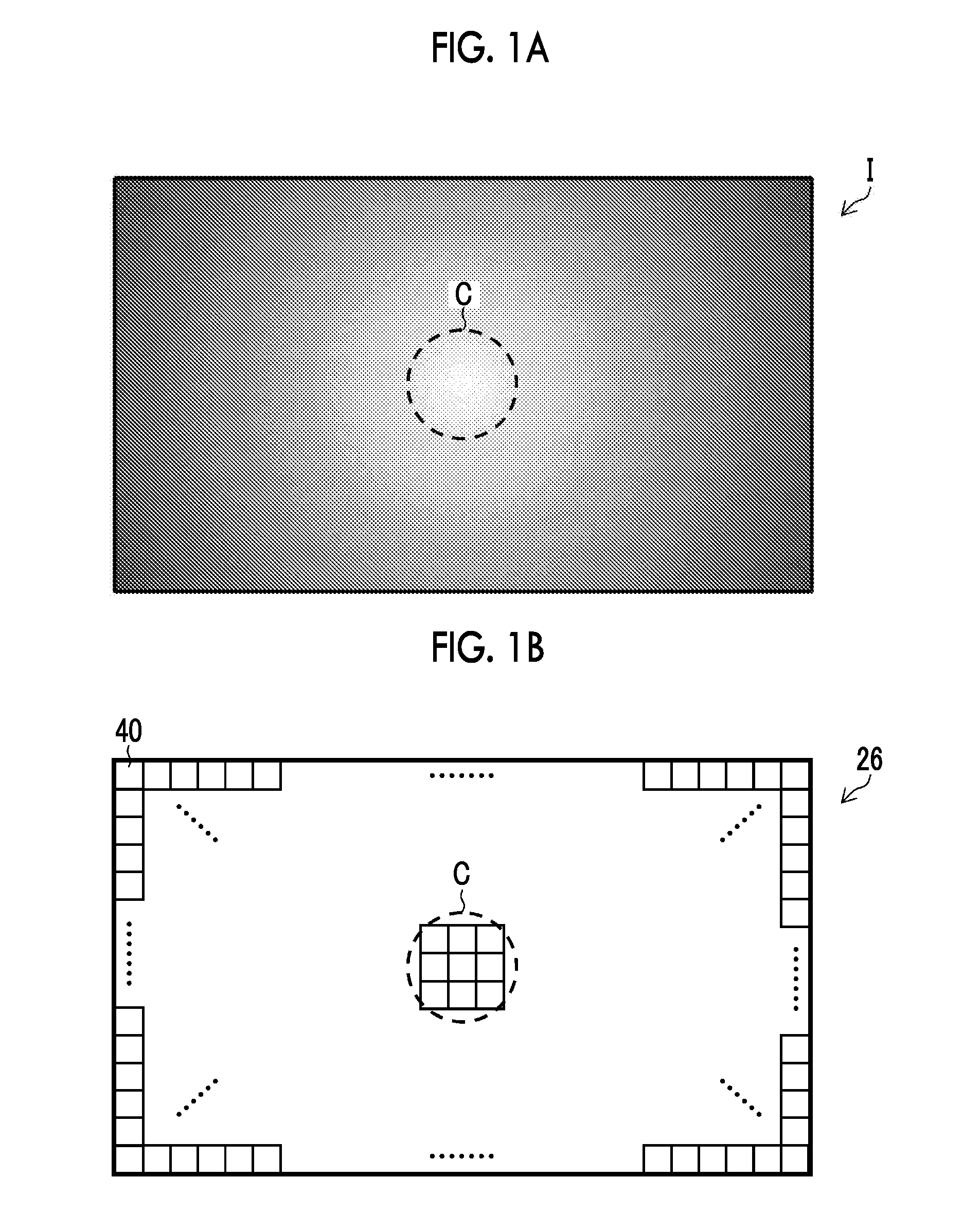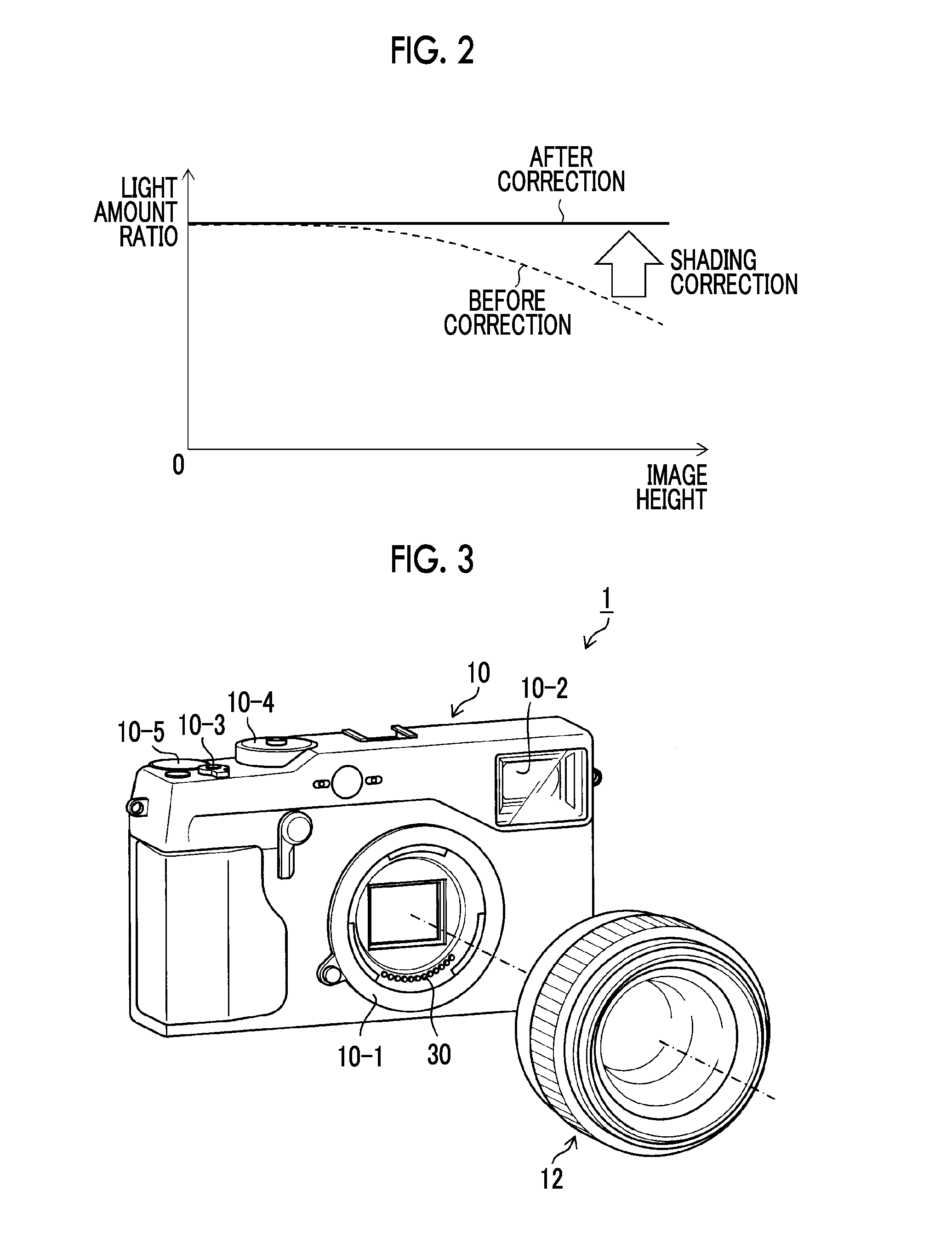Imaging device and imaging method
a technology of imaging device and image, which is applied in the field of image correction technology, can solve the problems of image blurring, difficult to achieve such shading correction, and image quality lowered by the increase of noise components, and achieve the effect of reducing the amount of light in a peripheral portion and increasing the amplification ratio
- Summary
- Abstract
- Description
- Claims
- Application Information
AI Technical Summary
Benefits of technology
Problems solved by technology
Method used
Image
Examples
first embodiment
[0129]FIG. 12 is a flowchart illustrating an image processing process according to the first embodiment.
[0130]The image processing process (imaging method) of the present embodiment includes: a process (original image data acquisition process) of acquiring image data of a subject image, a process (shading correction process) of performing shading correction processing on the image data, and a process (post-processing process) of performing another image processing on the image data subjected to the shading correction and recording the image data in a recording medium.
[0131]First, in the original image data acquisition process, the AE processing and the AF processing are performed (S31 of FIG. 12). These AE processing and AF processing are controlled by the main body controller 28 and performed by an arbitrary method, a shutter speed (exposure time period), an aperture value (F number), and an ISO sensitivity, and the like are set in accordance with a photography mode (such as an ape...
second embodiment
[0147]In the above-mentioned first embodiment, the time period of the single exposure operation can be determined on the basis of whether or not the set shutter speed is equal to or faster than “1 / focal length” second. However, in the present embodiment, the time period of the single exposure operation can be set in accordance with whether the subject is “a moving object” or “a stationary object”.
[0148]FIG. 13 is a flowchart illustrating an image processing process according to the second embodiment. In the present embodiment, detailed description of processing the same as that of the above-mentioned first embodiment will be omitted.
[0149]Also in the present embodiment, in a manner similar to the first embodiment, the original image data acquisition process, the shading correction process, and the post-processing process are sequentially performed. In particular, the shading correction process (S58 to S60 of FIG. 13) and the post-processing process (S61 to S62) of the present embodi...
third embodiment
[0157]In the above-mentioned second embodiment, presence or absence of the motion of the subject is inferred on the basis of the subject determination information, and the time period of the single exposure operation can be set. However, in the present embodiment, the time period of the single exposure operation can be set in accordance with blurring (hand shaking) of the imaging device 1.
[0158]FIG. 14 is a flowchart illustrating an image processing process according to the third embodiment. In the present embodiment, detailed description of processing the same as those of the above-mentioned first and second embodiments will be omitted.
[0159]Also in the present embodiment, in a manner similar to the first and second embodiments, the original image data acquisition process, the shading correction process, and the post-processing process are sequentially performed. In particular, the shading correction process (S78 to S80 of FIG. 14) and the post-processing process (S81 to S82) of th...
PUM
 Login to View More
Login to View More Abstract
Description
Claims
Application Information
 Login to View More
Login to View More - R&D
- Intellectual Property
- Life Sciences
- Materials
- Tech Scout
- Unparalleled Data Quality
- Higher Quality Content
- 60% Fewer Hallucinations
Browse by: Latest US Patents, China's latest patents, Technical Efficacy Thesaurus, Application Domain, Technology Topic, Popular Technical Reports.
© 2025 PatSnap. All rights reserved.Legal|Privacy policy|Modern Slavery Act Transparency Statement|Sitemap|About US| Contact US: help@patsnap.com



